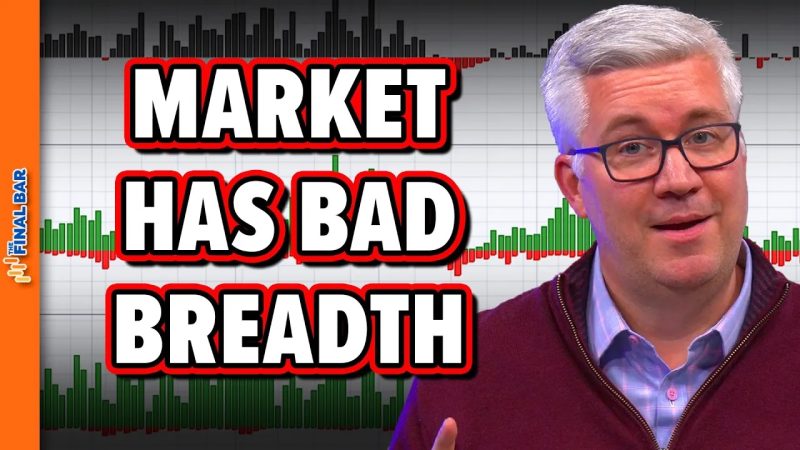Market breadth is an essential concept that plays a vital role in analyzing the overall health and direction of the financial markets. It refers to the number of individual securities participating in a market upswing or downturn. A market with positive breadth indicates that a large number of stocks are moving higher, suggesting a broad-based rally. In contrast, negative market breadth signals that only a select few stocks are driving the market higher, which may not be sustainable in the long run.
Investors often monitor market breadth to gauge the strength and sustainability of a market trend. Poor market breadth occurs when a small number of stocks are experiencing gains, while the majority of stocks are in decline. This disparity can raise concerns among investors about the underlying strength of the market rally.
There are several reasons why poor market breadth should be a cause for concern. Firstly, a market rally led by a narrow group of stocks is often viewed as fragile and susceptible to a sudden reversal. If the market rally is not supported by a broad base of stocks, it may lack the necessary momentum to sustain its upward trajectory.
Additionally, poor market breadth can be a warning sign of underlying weakness in the economy or specific sectors. When only a handful of stocks are driving the market higher, it may indicate that investors are favoring specific industries or companies, while neglecting others that could be facing challenges.
Moreover, poor market breadth can lead to increased volatility and unpredictability in the markets. A lack of broad participation in a market rally can result in sharp fluctuations as investors react to news and events, causing sudden shifts in stock prices.
Investors should also be cautious when poor market breadth coincides with other warning signs, such as high valuation levels or deteriorating economic indicators. These factors could further amplify the risks associated with a market rally that lacks broad participation.
In conclusion, while poor market breadth is not a definitive signal of an impending market correction, it serves as an important warning indicator for investors to exercise caution. Monitoring market breadth alongside other key market indicators can provide valuable insights into the underlying health and sustainability of a market rally. By being aware of the breadth of market participation, investors can make more informed decisions and better navigate the complexities of the financial markets.
